Don’t mention the pandemic…..

It’s impossible to start my first post of 2021 without mentioning the unending roller-coaster of living through a global pandemic. We are still going through this worldwide virus and who knows when we will emerge? So, here’s a tale that weaves around an old Wedgwood teapot, dark histories and the Pea Green boat.
Art Deco Wedgwood teapot
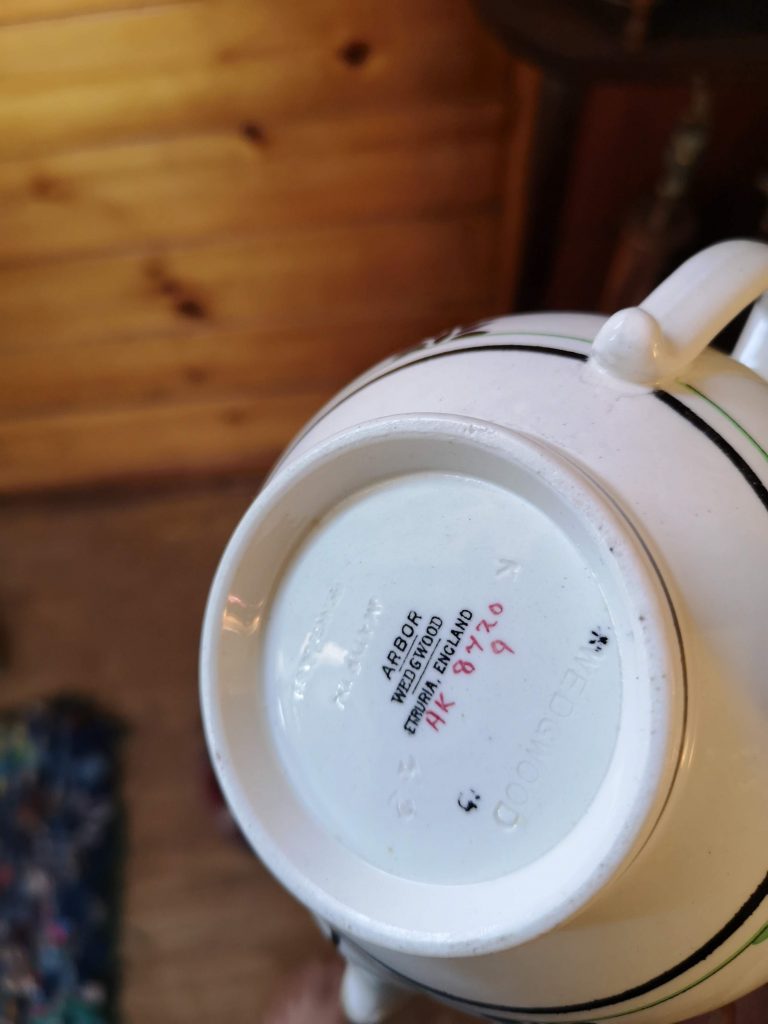
To begin, the teapot. For as long as I can remember, I have been an Art Deco fan. I love the colours, and shapes of Deco and how these filtered into everyday life. However, I have too much stuff, so I try to avoid buying more – which does make me sad. Rules are made to be broken. So, back in February I acquired a Wedgwood tea-set. The set, small in size and pieces, consists of a teapot, milk jug, sugar bowl and side-plate was a charity shop find. I liked the shape and the simple hand-coloured green and black tree design. Additionally, when I flipped the teapot over, I found it marked ‘Arbor’ (the pattern design), ‘Wedgwood’ and ‘Etruria, England’. The mention of Etruria triggered something buried deep in my head.
Not that Etruria
Etruria conjures the sunflower filled landscape of Tuscany, but, in the case of my teapot, Etruria refers to an area of Stoke-on -Trent. Admittedly, not quite sun drenched Tuscan hills. I had a memory of a link between Etruria and canals. I quickly learnt Josiah Wedgwood, ceramicist, named Etruria, Staffordshire. He relocated his ceramic factory, workers and his home to the site in 1769. The Wedgwood complex was built close to the planned route of the Trent and Mersey canal. This is unsurprising as Wedgwood was a keen supporter of the canal. Wedgwood was the celebrity who cut the first sod of the T & M in 1766. The Etruria factory finally moved to Barlaston in 1940. My teapot was made at Etruria in the final decades, before the move.
Weaving a teapot tale
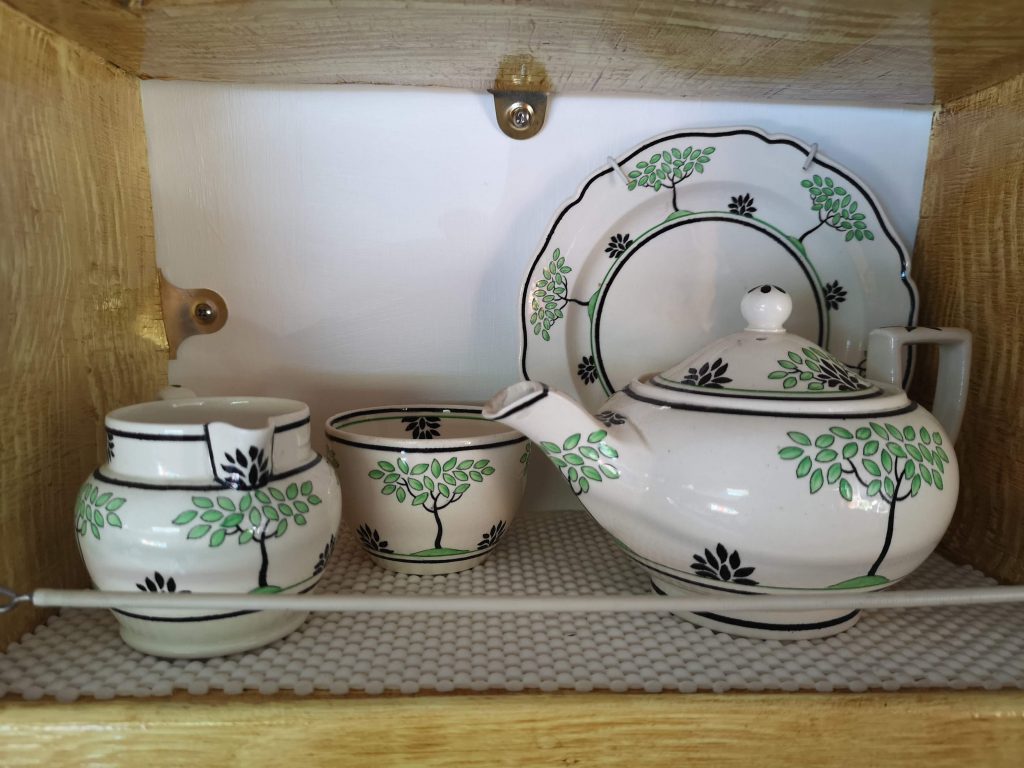
I find tea sets to be evocative objects. I can’t help but wonder about the people and their stories encountered along the way. Who made the teapot and was it one of the many female Wedgwood employees who painted it? Similarly, where was it sold and who bought it? Was my teapot used every day, or did it sit in a china cabinet, kept for ‘best’? More broadly the ripples of these every-day ceramics play into a wider social and economic, global history.
In the case of the tea set, tea the quintessential British drink, connects us to a less benign history. British colonial policies, including the British slave trade and use of enslaved people on plantations all fed into the drinking of tea. My 1930s teapot dates from 100 years after the abolition of slavery, but still provides a way to think about a complex past. A more ordinary question was where to keep it…
Where to put it
My little tea set seemed perfect to have aboard Pea Green. Plus, its historical canal connections planted a seed in my head: perhaps the Pea Green boat could trundle to Etruria with the teapot on board? Of course, in February, I did not foresee months of lockdown, painting orders dropping off and going slightly mad.
Wrongs of history
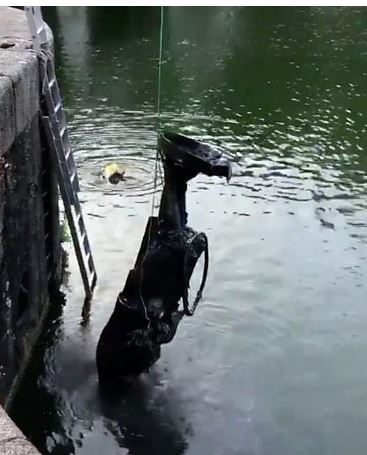
In May 2020, as the pandemic continued, we witnessed the murder of George Floyd and global engagement with the Black Lives Matter movement. In the UK demonstrations were defined by the toppling of a 19th Century statue of Edward Colston. (For a thought-provoking response, historian David Olusoga’s Guardian piece is worth a read.) Colston, a key player in the British slave trade and slavery during the 18th Century, gave much of his personal wealth to the city of Bristol. This act of philanthropy does not, I think, make up for his barbaric employment. As the statue was dumped into Bristol harbour, I reflected the UK has, for too long presented itself as an anti-slavery nation.
In reality this selective history has championed abolition and ‘forgotten’ British slave-owners and slave traders as well as their legacy. This version of history continues to harm our understanding of both the past and its influences on British society today. The question is how can we redress the balance.
Legacies of British Slave-ownership
One starting point maybe The Legacies of British Slave-ownership Centre, located at University College London (UCL). The website gives free access to a database of names of 47,000 British slave-owners. (3,000 of these include additional biographical details.) These men and women applied for British government compensation for the loss of their ‘property’. Of course, the ‘property’ was enslaved men, women and children. UCL’s ongoing research identifies multiple ways British society benefitted from the wealth created by the slave trade and slavery. The legacies criss-cross industries and companies, bankers and politicians, philanthropy and cultural institutions to name but a few. My first delve was to identify the former slave-owners who invested in canal companies.
Waterways and slave economies
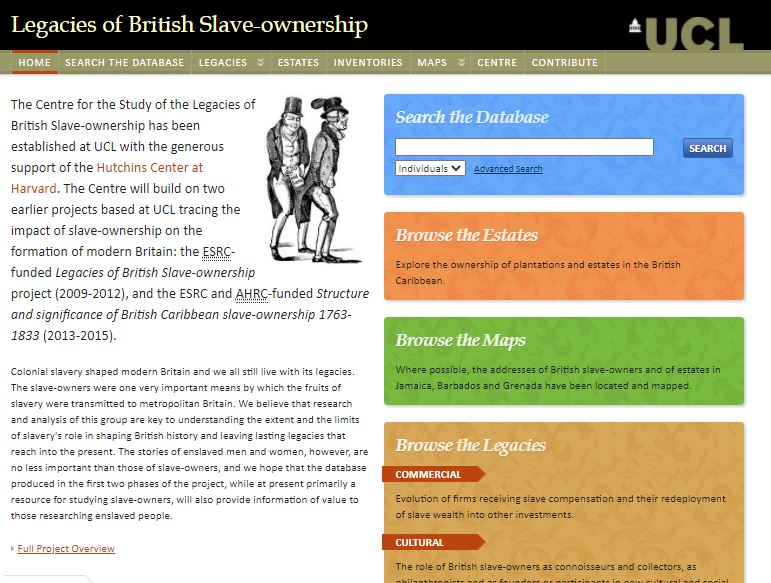
A quick search of the UCL data reveals a number of British slave owners giving finance to canal companies. The enhanced biographies reveal these funders as wealthy people who commodified the ownership and use of humans. Although these details provide a snapshot of direct canal investors there are many unanswered questions relating to the waterways and slavery. One tangible result of the Black Lives Matter protests is the Canal and River Trust (CRT) has started examining further connections between canals and Britain’s slave economy.
The CRT commissioned Honorary Research Fellow Dr Jodie Matthews to review the existing academic literature for themes associated with the waterways and slavery. In the review she has considered not only the financing outlined above, but also canals transporting goods produced by enslaved people as well as the development of cities and ports. Matthews’ paper reveals the complex links between the canals of Britain, enslaved labour, the transportation of raw materials and the production of finished goods to consumers. Clearly, we need much more research and dissemination f these themes.
Heading out on the cut
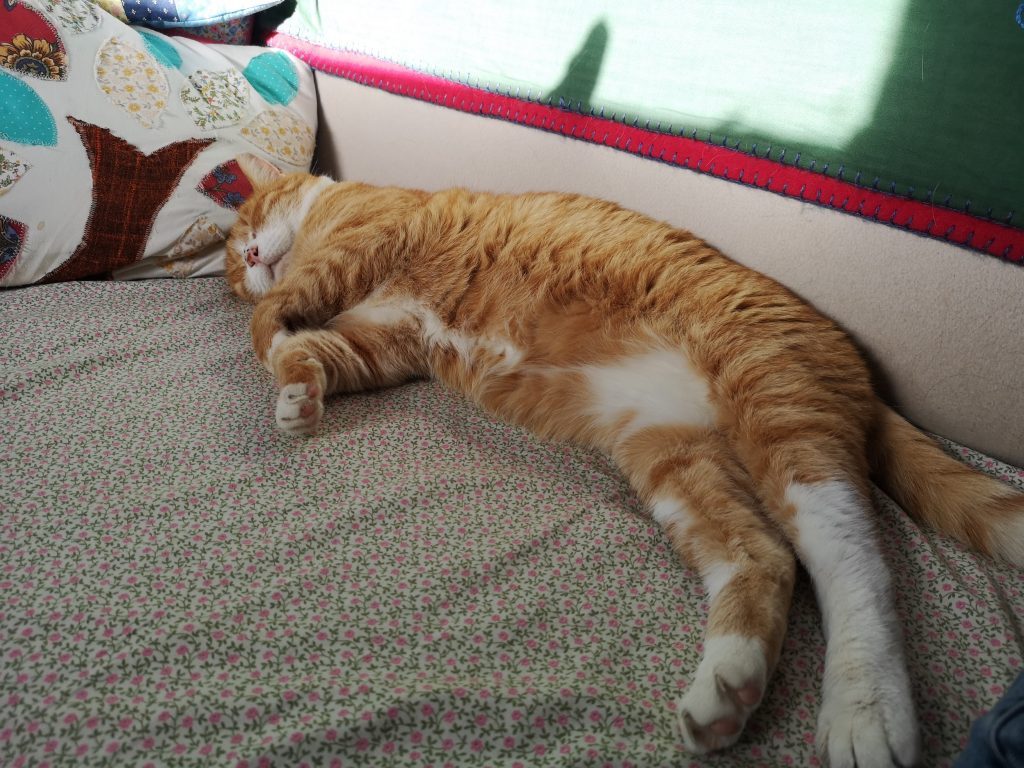
As lockdown #1 restrictions lifted, I took my headful of thoughts, my 20th Century Wedgwood teapot and Monte the Cat onto the Pea Green boat. The vague plan was to travel, trade and perhaps research a little more. I still held onto the hope of trying to get to the potteries and returning my teapot to Etruria, but it is a very long way in a small old boat.
‘Travel by map’ moment
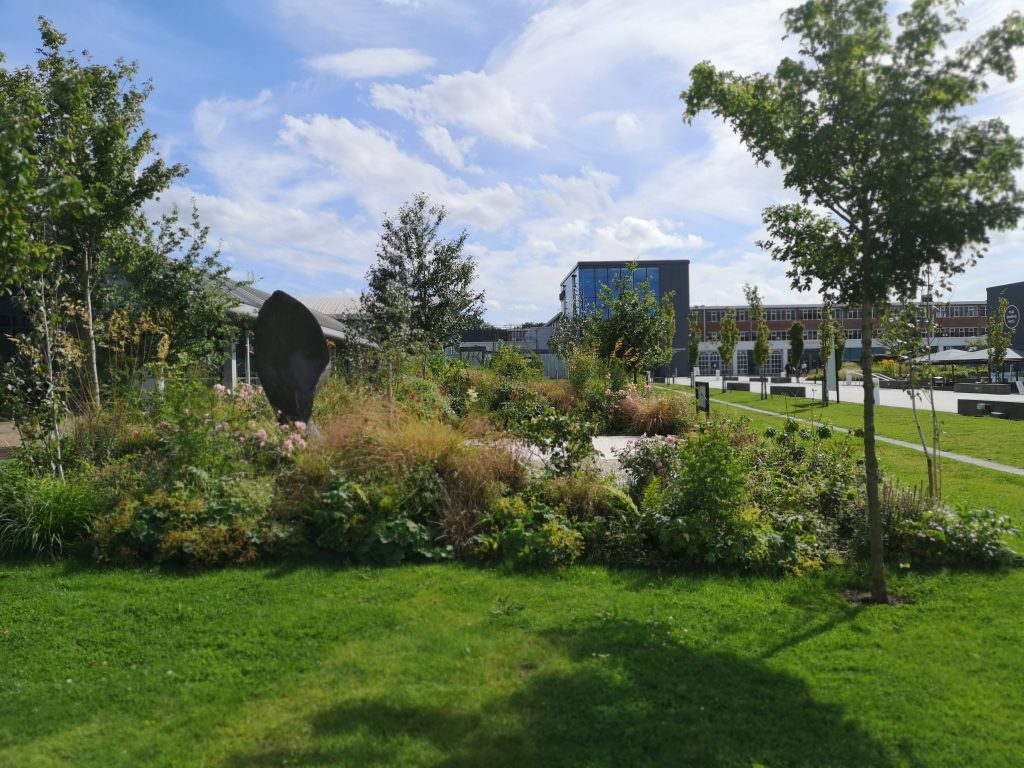
After months (yep, months!) of slow trundling – Pea Green’s top speed is 3MPH with a strong wind behind- we crept towards Stoke on Trent. (Here you must imagine a ‘travel by map’ film sequence – think Indiana Jones or Muppet Movie…) After leaving Welford I headed towards Braunston and on to Atherstone and Tamworth -via a short detour into Coventry. At Fazeley, I turned right towards Fradley Junction. Then, a left turn onto the Trent and Mersey at Fradley and I was well on my way to Stoke on Trent. Though before getting there, at Barlaston I moored at the current home of the Wedgwood factory. The World of Wedgwood is also home to an exceptional museum.
The V&A Collection
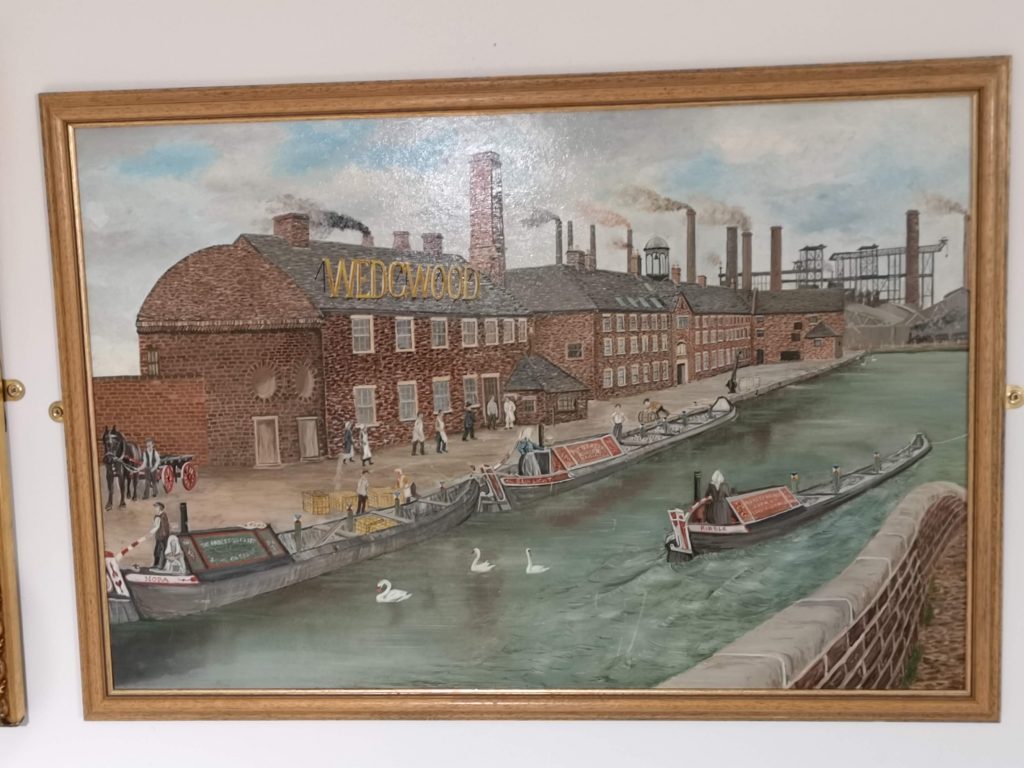
The V & A collection at the World of Wedgwood maps the personal and professional life of Josiah Wedgwood, born in 1730, and subsequent generations of Wedgwoods. Josiah was also a leading thinker and reformer. As reflected in his membership of the Lunar Men and the Clapham Sect. The latter campaigned for the abolition of the slave trade. Wedgwood as an abolitionist produced a well known anti-slave trade medallion at his Etruria factory, one of which is on display in the museum at Barlaston. Many involved in the anti-slave trade movement bought the medallion. ( Today, continued use of the medallion in exhibitions is seen as challenging – See this article for an in-depth review.) Josiah and his wife Sarah had 8 children and it is his eldest son, John who provides an interesting twist to this abolitionist family.
The eldest son
After my visit to I wanted to dig a little deeper into the Wedgwood family – I am curious and never quite convinced by a glowing representation. Josiah’s eldest son, John worked in the family business but soon left. As yet, I haven’t been able to find sources explaining his resignation, only vague suggestions that as an educated gentleman it didn’t suit him! However, in 1792 Josiah paid for his son John to become a partner in the London and Middlesex Bank. Also known by the partner’s names, Davison, Noel, Templer, Middleton & Wedgwood. I wondered what I could find about John or the bank. It wasn’t long before I found both the bank and John Wedgwood’s name on the UCL slave owner compensation database.
The partners
After finding John,as a co-owner of a St Kitts plantation, I searched the database for his banking partners. I found Noel, Templer and Middleton all had family ties to slavery in the Caribbean. Nathaniel Middleton’s wife had inherited shares of her father’s estates and 490 enslaved men, women and children. Middleton himself held a mortgage for estates and enslaved people in Jamaica. Similarly, George Templer, also an MP, held a personal mortgage for estates using enslaved people on Jamaica in the 1790s. Sir Gerard Noel Noel, a baron and MP, owned an estate on St Kitts. Sir Gerard was awarded £337 6s 6d in compensation for the 19 enslaved people on his estate. In fact it was this same estate that the banking partners co-owned.
Considering John Wedgwood
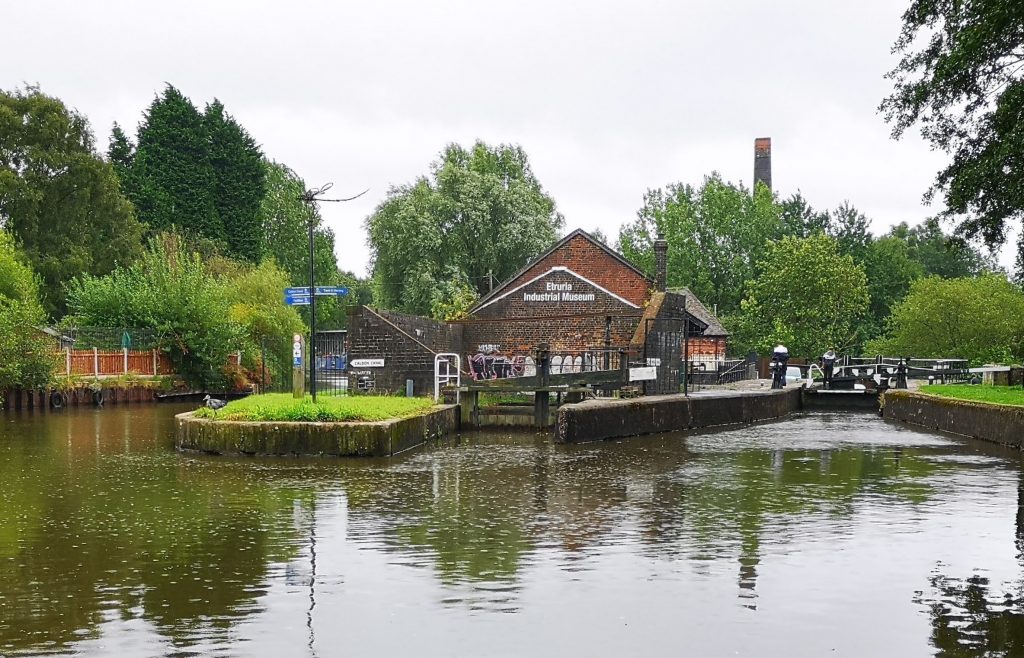
John Wedgwood’s co-ownership of enslaved people and his professional relationship with others engaged in slavery, is difficult to comprehend in the 21st Century. Especially given his family’s prominence in the anti-slave trade/ slavery movement. However, perhaps it is worth considering that both John’s parents were dead by 1817, so perhaps he didn’t feel constrained by his family. Also, John Wedgwood was an absentee co- owner, this does not excuse his role, however it is easier to ignore the brutal truth of making money from enslavement from afar. Finally, perhaps John’s position reflects the insidious nature of engagement in slave trade/ slavery across the British elite. As the UCL Centre has found the web of slave economies runs wide and deep.
Pea Green reaches Etruria
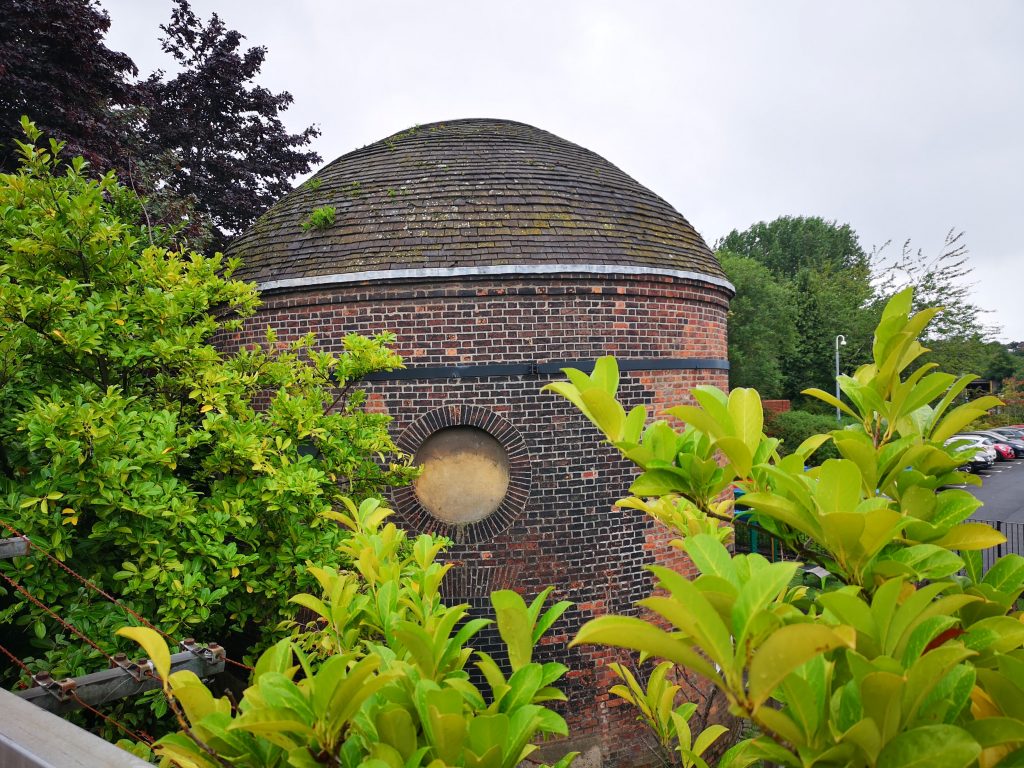
My delve into the Wedgwood family, driven by a pretty 20th Century teapot and a global protest movement left me with lots to think about as Pea Green finally trundled through Etruria summit lock to the site of the first purpose built Wedgwood factory. Today, the Wedgwood site is occupied by the HQ of Bet 365. Only a single building dating from the 18th Century remains – one of the two round towers that marked either end of the factory’s canal frontage. However, due to serious subsidence the tower is now substantially below the level of the canal, and appears further diminished by a large, concrete bridge carrying a busy road running close to the tower roof.

Connections
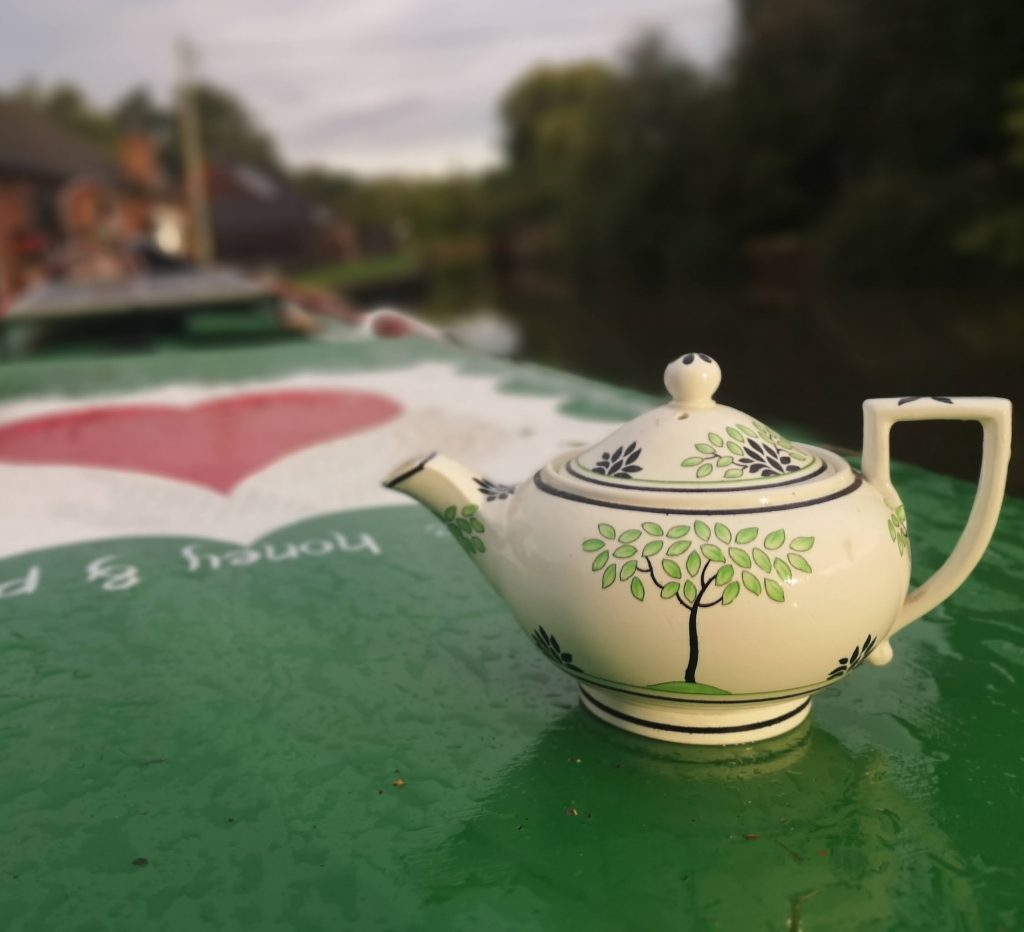
I had hoped to take a helm-by (think drive-by but from a boat) photo of my teapot as I passed the site of the Wedgwood factory. Unfortunately, the fabulous British summer – howling gale and horizontal rain- put paid to that. Instead, I settled for a photo at Etruria junction a few days later in calmer weather. At that point I contemplated the messy, complex, mix of history and how it weaves through all we do. If I hadn’t bought my teapot I probably wouldn’t have made it to Etruria, which in turn would mean that I wouldn’t have considered Wedgwood or his family, or how dark history of 200 years ago shapes our world today.
Note: As a blog piece I haven’t given full references for sources used, instead I have hyperlinked all web-materials throughout this piece. All websites were accessed / checked 24th January 2021. As always please do feel free to comment or message.
Enjoyed reading this very much. Will continue thinking about it all and clicking on the links. Take care
Thank you for taking the time to read, glad it provided food for thought. 🙂
Very interesting! And I love that the teapot made it back to Etruria!
Thank you for taking the time to read ?. Yes, it felt like a mission with the teapot!
hi Kay ,long time no see !
Thoroughly enjoyed this blog , so interesting and based around such a lovely tea set . look forward to your next one , pandemic permitting ! take care , cheers Pat
Thanks Pat! Good to hear from you. Glad you enjoyed it, know it is a long and twisty tale.. ?
What a wonderful blog and thank you for taking us on your teapots journey . Your thought about the history of your teapot and the stories it holds put me in mind of a poem by Thomas Hardy called Old Furniture. We also have a small set of art deco teacups and plates which are at the moment in a box on our boat, but we’re determined to find a safe home on show in our new boat.
Fran x
Fran, thank you for taking the time to read and comment. I will have to look up the Hardy poem as I am not familiar with it. There is a similar DH Lawrence poem about an old plate, I must dig that out too! I love a bit of Art Deco ceramic, its that fine line of loving the object, but being OK if it gets broken. (Am not sure I manage that very well.!)
A very interesting blog Kay. Amazing how by the simple purchase of your loverly tea pot inspired you for a trip to the potteries which in turn led to your reseach (strange how things work out).
I wonder what purchase you will make this year and where that might take you, Monte and Pea Green!
Thank you Clive, hope all is well with you. I am dreadful with things I buy as I always wonder about a piece’s back story and what tales it could tell given the chance! I think that comes with being a social historian. 🙂